
Nokia Corporation is a Finnish multinational telecommunications, information technology, and consumer electronics corporation, established in 1865. Nokia's main headquarters are in Espoo, Finland, in the Helsinki metropolitan area, but the company's actual roots are in the Tampere region of Pirkanmaa. In 2020, Nokia employed approximately 92,000 people across over 100 countries, did business in more than 130 countries, and reported annual revenues of around €23 billion. Nokia is a public limited company listed on the Nasdaq Helsinki and New York Stock Exchange. It was the world's 415th-largest company measured by 2016 revenues, according to the Fortune Global 500, having peaked at 85th place in 2009. It is a component of the Euro Stoxx 50 stock market index.

A smartphone is a mobile device that combines the functionality of a traditional mobile phone with advanced computing capabilities. It typically has a touchscreen interface, allowing users to access a wide range of applications and services, such as web browsing, email, and social media, as well as multimedia playback and streaming. Smartphones have built-in cameras, GPS navigation, and support for various communication methods, including voice calls, text messaging, and internet-based messaging apps.

A mobile game is a video game that is typically played on a mobile phone. The term also refers to all games that are played on any portable device, including from mobile phone, tablet, PDA to handheld game console, portable media player or graphing calculator, with and without network availability. The earliest known game on a mobile phone was a Tetris variant on the Hagenuk MT-2000 device from 1994.
Nokia Series 40, often shortened as S40, is a software platform and application user interface (UI) software on Nokia's broad range of mid-tier feature phones, as well as on some of the Vertu line of luxury phones. It was one of the world's most widely used mobile phone platforms and found in hundreds of millions of devices. Nokia announced on 25 January 2012 that the company has sold over 1.5 billion Series 40 devices. It was not used for smartphones, with Nokia turning first to Symbian, then in 2012–2017 to Windows Phone, and most recently Android. However, in 2012 and 2013, several Series 40 phones from the Asha line, such as the 308, 309 and 311, were advertised as "smartphones" although they do not actually support smartphone features like multitasking or a fully fledged HTML browser.

The Nokia N95 is a mobile phone produced by Nokia as part of their Nseries line of portable devices. Announced in September 2006, it was released to the market in March 2007. The N95 ran S60 3rd Edition, on Symbian OS v9.2. It has a two-way sliding mechanism, which can be used to access either media playback buttons or a numeric keypad. It was first released in silver and later on in black, with limited edition quantities in gold and purple. The launch price of the N95 was around €550.

The Nokia 6300 is a mobile telephone handset produced by Nokia. It was announced on 28 November 2006 and released in January 2007. This model was assembled in several factories, including Jucu plant, near Cluj, in Romania.

The Nokia 6120 classic is a mid-range mobile phone from Nokia that was announced on 17 April 2007. It runs on Symbian v9.2 with a S60 3rd Edition FP1 user interface.

Windows Phone (WP) is a discontinued mobile operating system developed by Microsoft for smartphones as the replacement successor to Windows Mobile and Zune. Windows Phone featured a new user interface derived from the Metro design language. Unlike Windows Mobile, it was primarily aimed at the consumer market rather than the enterprise market.
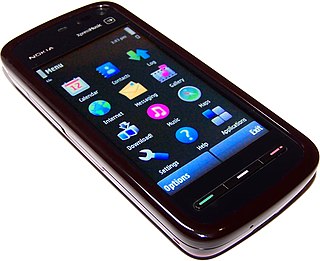
Nokia 5800 XpressMusic is a smartphone part of the XpressMusic line, announced by Nokia on 2 October 2008 in London and started shipping in November of that year. Code-named "Tube", it was the first touchscreen-equipped S60 device by Nokia – essentially it was the first device to run Symbian^1, also known as S60 5th Edition, the touch-specific S60-based platform created by the Symbian Foundation. The touchscreen features tactile feedback.
Nokia Life, earlier Ovi Life Tools and Nokia Life Tools, was an SMS based, subscription information service designed for the "Next Billion Users" in emerging markets, and offers a wide range of information services covering healthcare, agriculture, education and entertainment. The project began with Nokia's Emerging Market's Jawahar Kanjilal, wherein he worked with BCG to identify the services for consumers in emerging markets to expand Nokia's footprint and drive long-term loyalty. The team then carried on consumer research, insights generation, proposition development & concept definition for the "Next Billion Consumers". Post Board approval, Nokia teams led by Jawahar Kanjilal & Hemant Madan created a suite of services, branding, distribution, piloting, pricing & digital subscriptions business model for the Bottom of the Pyramid (BoP) consumers, because of the significant brand- and distribution presence that it already had in those markets at that time. In 2013 Nokia Life was eliminated due to Nokia's switch in focus and the arise of Internet-based information services in those markets. The service has been available in Pakistan, India, Indonesia, China, and Nigeria. Around 125 million people have experienced Nokia Life services in these five countries. Nokia Life was launched as Mera Nokia, in the state of Maharashtra in India in early 2009. After the successful pilot, a wider commercial deployment of the service under the name Nokia Life Tools began in India in June 2009. The service was later expanded to Indonesia in November 2009, China in May 2010, and Nigeria in November 2010. Nokia Life was able to use the existing distribution network of Nokia by pre-installing it on Nokia devices. The first two supported devices were the Nokia 2323 Classic and Nokia 2330 Classic devices.
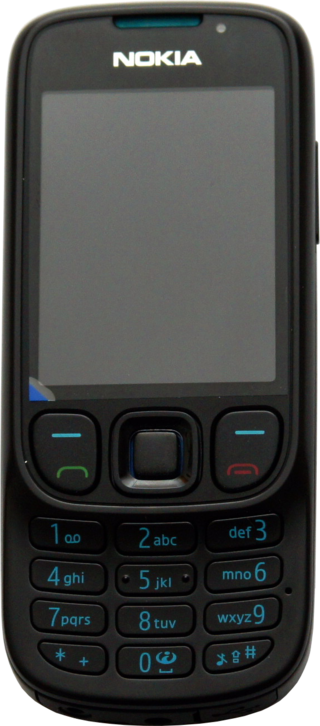
The Nokia 6303 classic is a mobile telephone handset produced by Finnish manufacturer Nokia. The Nokia 6303 classic was announced in December 2008, it has been in production since May 2009. It is the successor to the Nokia 6300.
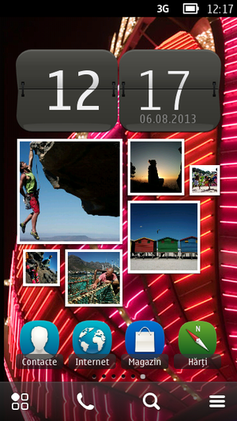
Symbian is a discontinued mobile operating system (OS) and computing platform designed for smartphones. It was originally developed as a proprietary software OS for personal digital assistants in 1998 by the Symbian Ltd. consortium. Symbian OS is a descendant of Psion's EPOC, and was released exclusively on ARM processors, although an unreleased x86 port existed. Symbian was used by many major mobile phone brands, like Samsung, Motorola, Sony Ericsson, and above all by Nokia. It was also prevalent in Japan by brands including Fujitsu, Sharp and Mitsubishi. As a pioneer that established the smartphone industry, it was the most popular smartphone OS on a worldwide average until the end of 2010, at a time when smartphones were in limited use, when it was overtaken by iOS and Android. It was notably less popular in North America.

The Nokia 3650, sold in North American markets as the Nokia 3600, is a mobile phone from Nokia announced on 6 September 2002 as the successor to the Nokia 7650. It runs Symbian OS Series 60.
Nokia's strategic nomenclature can be traced back in 2005 when the Nseries line was launched, offering devices with flagship specifications and premium hardware at various price points. These devices were considered the "bread and butter" of the company and were often positioned to showcase their latest technologies. Thanks to the newfound consumer and enterprise interest in smartphones at the time, the company introduced four additional collections to diversify their product portfolio and meet demands in most market segments. These new phone series were named Eseries, targeting small business and enterprise customers; Xseries, providing consumer-grade multimedia-focused devices; Cseries, which Nokia used to target both the low-end and mid-range market segments; and Tseries, for devices exclusive to the Chinese market.
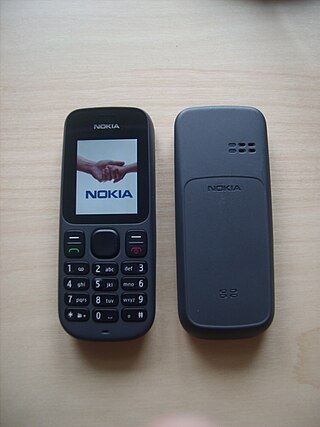
The Nokia 100 was a basic 2G feature phone released by Nokia on 25 August 2011. The mobile phone was aimed at emerging markets and budget-conscious consumers, and could be bought carrier-unlocked for a relatively low price.

Human Mobile Devices (HMD), formally HMD Global, is a Finnish mobile phone manufacturer. The company is made up of the mobile phone business that the Nokia Corporation sold to Microsoft in 2014, then bought back in 2016. HMD began marketing Nokia-branded smartphones and feature phones on 1 December 2016. The company has exclusive rights to the Nokia brand for mobile phones through a licensing agreement. The HMD brand was initially only used for corporate purposes and does not appear in advertising, whereas the name "Nokia Mobile" is used on social media. As it was launched, the acronym HMD stood for Hon Hai Mobile Devices. This was in reference to the main shareholder at the time of its creation: the Taiwanese group Foxconn. In January 2024, HMD rebranded to 'Human Mobile Devices', and will use their own branding on future devices alongside that of Nokia.

KaiOS is a mobile Linux distribution for keypad feature phones based on the Firefox OS open-source project. It is developed by KaiOS Technologies Limited; a company based in Hong Kong, whose largest shareholder is Chinese electronics conglomerate TCL Corporation. KaiOS runs on feature phones or wireless home phones made with low-power hardware and low power consumption. KaiOS supports modern connectivity technologies like 4G LTE, VoLTE, GPS, and Wi-Fi. KaiOS runs HTML5-based apps. KaiOS supports over-the-air updates and has a dedicated app marketplace called KaiStore. Some applications are preinstalled onto the phone, including Facebook and YouTube. As of 1 April 2020, there are 500+ apps in KaiStore. The mobile operating system is comparatively lightweight on hardware resource usage, and is able to run on devices with just 256 megabytes (MB) of memory.
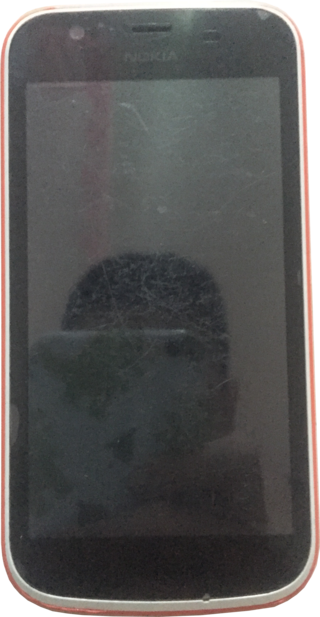
The Nokia 1 is a Nokia-branded budget Android Go smartphone, developed by HMD Global. It was launched at the Mobile World Congress 2018, in Barcelona, Spain on 25 February 2018. This device, along with the Nokia 8 Sirocco, completes the lineup of Nokia-branded Android devices. The phone also has separately sold removable back covers marketed as Xpress-on, a trade-name that first appeared on the Nokia 5110. This was the first time the Xpress-on name was used since the Nokia Lumia 710 in 2012.















